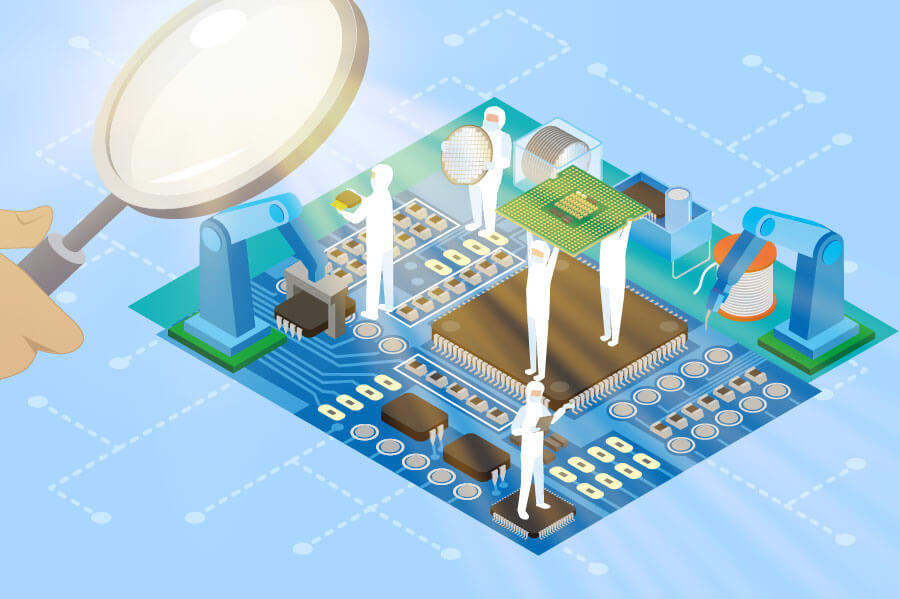Aseptic manufacturing is one of the most difficult forms of manufacturing. From the processes to the inspections to the documentation, this is not an easy task. The right Environmental Monitoring System (EMS), though, can make it simpler.
An EMS is made up of a system of filters and sensors that connect to a processing software. It should alert you when designated environmental factors go outside of normal limits. Because of the demands of aseptic manufacturing, it is, quite frankly, impossible to do without an EMS. So let’s dive into exactly how an environmental monitoring system keeps an aseptic manufacturing facility running and what you should look for in one to elevate your experience.
Cleanroom Classification
To demonstrate compliance with best practices and quality standards, aseptic manufacturing must take place in a cleanroom classified by a national or international standard, such as ISO 14644. Standards like ISO 14644, which is one of the most popular and respected cleanroom certifications, specify the maximum allowable levels of airborne particles for different cleanroom grades.
For ISO 14644, there are 9 grades of cleanroom. If you want to be the cleanest cleanroom, you’ll need an ISO 1 classification. To attain this classification, you’ll need to prove a known sample that has 10 or fewer particles measuring 0.1 microns and only 2 or fewer particles at 0.2 microns.
From there, the scale allows for more and larger particles. ISO 9 is considered normal room air. These rooms have a known sampling with 35,200,000 or fewer particles measuring 0.5 microns, 8,320,000 or fewer particles measuring 1 micron, and 293,000 or fewer particles measuring 5 microns.
Depending on what you use your cleanroom for, different classifications would be appropriate. Thus, when you choose an EMS, you need to have a thorough understanding of:
- Your application,
- The types of risk associated with your application and the size of those particles,
- And specific areas that will be more susceptible to contamination.
Not every area in your cleanroom needs to be held to the same standard of cleanliness. There are two especially important areas to note: the critical areas and the buffer areas.
Critical Areas
The critical areas are where the aseptic product or the containers are exposed to the environment. These areas should be classified at an ISO 5 or cleaner.
Buffer Areas
Your buffer areas should be around your critical areas, where sterile compounding takes place. This provides a layer of protection from the natural environment. Your buffer areas should be ISO 7 or cleaner. It also recommended this space be a negative pressure area.
Something to consider when choosing your EMS is its versatility. Does it easily set different limits for separate areas in your cleanroom?
Particle Monitoring
Your EMS is responsible for measuring and counting airborne particles in your cleanroom. You need to understand your application, the corresponding risks, the size of particles that can impact your product, and regulations surrounding these potential risks. From there, you can choose an EMS best suited for identifying these particles.
Environmental Parameters
Aside from particles and potential contaminants, your EMS will monitor other environmental factors that impact your application, such as temperature and humidity. While we have been addressing your EMS directly in the cleanroom, these environmental factors can matter in less critical areas, as well. You might want to install the appropriate sensors in storage areas or incubators, which might not necessarily be directly in the cleanroom. Storing sterile products at the proper temperature can be incredibly important to its shelf life and sterility.
When you choose your EMS, consider how well it handles adding sensors outside of the initial establishment.
Alarm Systems
What happens if your EMS detects a deviation from the specified limits? It should trigger an alarm – and tell you! A modern day EMS should immediately alert you of contamination, although many cleanrooms operate with older systems that still rely on paper printouts. This does not follow best practice, as contamination could happen hours before the printouts are read. Thus, having an EMS in place with real-time alerts can save you yield loss, downtime, and frustration.
Data Tracking
A critical component of classifying a cleanroom, certifying instruments, complying with regulations, and passing audits is providing a comprehensive data trail. A well-thought-out EMS tracks data for you and can even help compile documentation for certain regulatory bodies.
Another benefit of tracking data is trend analysis. An EMS can help you identify when exactly contamination is occurring. For example, a common cause of contamination is improper gowning. If a contamination event occurs every time a certain person is near the sensor, you might consider their aptitude at gowning.
Regulatory Compliance In Aseptic Manufacturing Is Impossible Without An EMS
Ultimately, regulatory compliance in aseptic manufacturing is impossible without an EMS. It is impossible to guarantee the product has avoided contamination. It is impossible to guarantee safety. It is impossible to provide data trails.
A good EMS will not only keep your aseptic manufacturing facility up and running, but it will also make your life easier. For example, it will…
- Integrate into your existing system.
- Offer easy customization to meet your exact needs.
- Have a very user friendly interface.
- Make complex monitoring simple.
Here at LWS, we have been defining excellence in air quality monitoring and EMS for over 40 years. We offer comprehensive EMS installation, management, and more, complete with quality products backed by our outstanding support and customer service.


